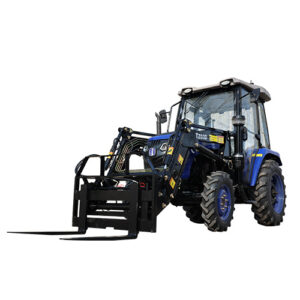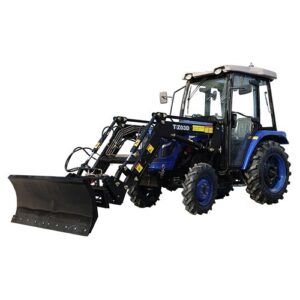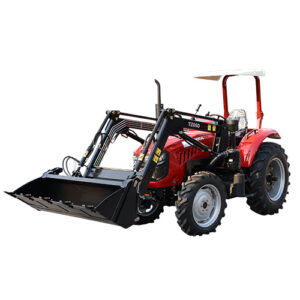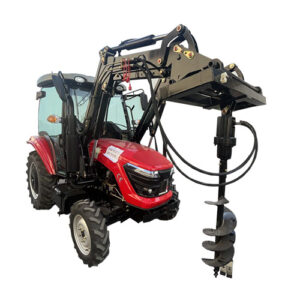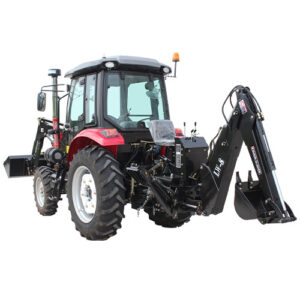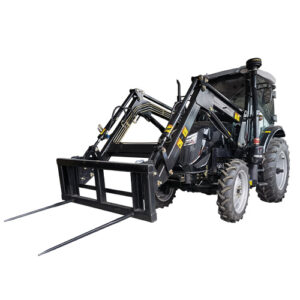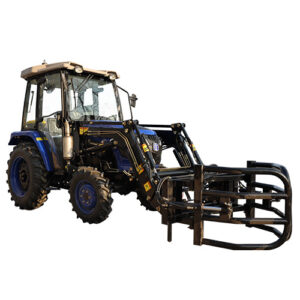Introduction
Pallet forks are an indispensable attachment for tractors, significantly enhancing their versatility and efficiency. Whether you are working on a farm, construction site, or in a warehouse, a pallet fork with tractor can make material handling tasks easier and more efficient. However, choosing the right pallet fork for your specific needs requires careful consideration of various factors. This comprehensive guide will help you understand what to look for in a pallet fork with tractor, the benefits of using one, and how to make the best choice for your tasks. By the end of this article, you will have a thorough understanding of how to select the right pallet fork with tractor for your needs.
Understanding Pallet Forks and Their Uses

Pallet forks are attachments that allow tractors to lift and move pallets and other heavy objects. They consist of two prongs (forks) that slide under the load and lift it securely. Pallet forks are used in various industries, including agriculture, construction, and warehousing, to transport materials efficiently and safely.
Key Components of a Pallet Fork With Tractor
Forks: The horizontal prongs that lift the load.
Frame: The vertical support structure that attaches to the tractor.
Mounting System: The mechanism that connects the pallet fork to the tractor.
Common Uses
- Agriculture: Moving hay bales, feed bags, and other heavy farm supplies.
- Construction: Transporting building materials such as bricks, concrete blocks, and timber.
- Warehousing: Handling palletized goods, equipment, and supplies.
Benefits of Using a Pallet Fork With Tractor
Using a pallet fork with tractor offers numerous advantages, making it a valuable addition to your equipment.
Versatility
Pallet forks can handle a wide range of materials, from pallets to loose items, enhancing the versatility of your tractor.
Efficiency
These attachments allow for quick and easy movement of heavy loads, improving productivity and reducing manual labor.
Safety
Using a pallet fork with tractor reduces the risk of injury associated with manual lifting and carrying of heavy objects.
Cost-Effectiveness
Investing in a pallet fork attachment can save money by reducing labor costs and increasing the efficiency of material handling operations.
Factors to Consider When Choosing a Pallet Fork With Tractor
Selecting the right pallet fork with tractor involves considering several important factors to ensure it meets your specific needs.
Load Capacity
The load capacity of the pallet fork must match or exceed the maximum weight of the materials you plan to lift. Overloading can lead to equipment damage and safety hazards.
Fork Length
The length of the forks should be appropriate for the size of the loads you will be handling. Longer forks provide better stability for larger loads, while shorter forks are more maneuverable.
Frame Width
The width of the frame should be compatible with your tractor and the types of loads you will be lifting. A wider frame offers better stability for wider loads.
Mounting System Compatibility
Ensure the pallet fork is compatible with your tractor’s mounting system. Common mounting systems include quick-attach, Euro-style, and pin-on mounts.
Material and Construction
Pallet forks should be made of durable materials, such as high-strength steel, to withstand heavy use and rough conditions. Look for features like reinforced frames and wear-resistant fork tips.
Adjustability
Some pallet forks offer adjustable forks that can be moved closer together or farther apart to accommodate different load sizes. This feature adds versatility to the attachment.
Weight of the Attachment
Consider the weight of the pallet fork attachment itself. A lighter attachment reduces the load on your tractor, allowing for better performance and fuel efficiency.
Price and Warranty
Compare prices and warranty options to find a pallet fork that offers good value for money. A longer warranty provides peace of mind and protection against defects.
Types of Pallet Forks
There are several types of pallet forks available, each designed for specific applications and tractor types.
Standard Pallet Forks
Standard pallet forks are versatile and suitable for general material handling tasks. They come in various sizes and capacities to match different tractors and load requirements.
Heavy-Duty Pallet Forks
Heavy-duty pallet forks are built for demanding applications, such as construction and industrial use. They feature reinforced frames and higher load capacities.
Adjustable Pallet Forks
Adjustable pallet forks allow the width between the forks to be adjusted, making them suitable for handling loads of different sizes.
Bale Spears
While not traditional pallet forks, bale spears are used for handling round and square bales in agricultural settings. They feature long, pointed spears that penetrate the bales for secure lifting.
Fork Extensions
Fork extensions are add-ons that increase the length of the forks, allowing you to handle longer loads without investing in a new attachment.
Comparison Table of Different Pallet Forks
To help you make an informed decision, here is a comparison table of different types of pallet forks based on key features and applications:
| Type of Pallet Fork | Fork Length (in) | Adjustable Width | Suitable Applications |
|---|---|---|---|
| Standard Pallet Forks | 42 – 48 | No | General material handling |
| Heavy-Duty Pallet Forks | 48 – 60 | No | Construction, industrial |
| Adjustable Pallet Forks | 42 – 48 | Yes | Versatile material handling |
| Bale Spears | 36 – 48 | No | Agricultural bale handling |
| Fork Extensions | 60 – 96 | N/A | Handling long loads |
Steps to Attach and Use a Pallet Fork With Tractor
Attaching and using a pallet fork with tractor involves a few simple steps to ensure safe and efficient operation.
Attaching the Pallet Fork
Align the Tractor: Position the tractor so that the mounting system is aligned with the pallet fork attachment.
Secure the Attachment: Engage the mounting system (e.g., quick-attach) to lock the pallet fork in place. Ensure all locking mechanisms are secure.
Check Stability: Verify that the pallet fork is securely attached and stable before proceeding.
Using the Pallet Fork
Adjust Fork Width: If using adjustable forks, set the width to match the load size.
Position the Forks: Approach the load with the forks parallel to the ground. Slide the forks under the load until it is centered.
Lift the Load: Raise the forks slowly and steadily, ensuring the load remains balanced.
Transport the Load: Move the load to the desired location, keeping the forks low to the ground for stability.
Lower the Load: Lower the load gently to avoid damage or instability.
Maintenance and Safety Tips

Proper maintenance and safe operation of your pallet fork with tractor are essential for longevity and safety.
Regular Maintenance
- Inspect for Damage: Regularly check the forks and frame for signs of wear or damage. Replace any damaged components immediately.
- Lubricate Moving Parts: Lubricate hinges, pins, and other moving parts to ensure smooth operation.
- Clean After Use: Remove debris and dirt from the forks and frame after each use to prevent rust and corrosion.
Safety Tips
- Follow Weight Limits: Never exceed the load capacity of the pallet fork or the tractor.
- Use Proper Lifting Techniques: Ensure the load is centered and balanced on the forks before lifting.
- Operate on Stable Ground: Avoid operating on uneven or unstable surfaces to prevent tipping.
- Wear Protective Gear: Always wear appropriate safety gear, such as gloves and safety glasses, when operating the tractor and pallet fork.
Conclusion
Choosing the right pallet fork with tractor is crucial for optimizing your material handling tasks. By understanding the different types of pallet forks, their uses, and the factors to consider when selecting one, you can make an informed decision that meets your specific needs. Proper maintenance and safe operation will ensure that your pallet fork remains a valuable tool for years to come. Whether you are working on a farm, construction site, or warehouse, the right pallet fork with tractor can significantly enhance your efficiency and productivity.
FAQ
Q: What is the primary use of a pallet fork with tractor?
A pallet fork with tractor is primarily used for lifting and moving pallets and other heavy loads in agricultural, construction, and industrial settings.
Q: How do I choose the right load capacity for my pallet fork?
Choose a pallet fork with a load capacity that matches or exceeds the maximum weight of the materials you plan to lift. This ensures safe and efficient operation.
Q: Can I use pallet forks with any tractor?
Pallet forks are designed to be compatible with specific mounting systems. Ensure the pallet fork you choose is compatible with your tractor’s mounting system, such as quick-attach or Euro-style mounts.
Q: What are the benefits of adjustable pallet forks?
Adjustable pallet forks allow you to change the width between the forks, making them versatile for handling loads of different sizes. This flexibility enhances their usability in various applications.
Q: How often should I inspect and maintain my pallet fork with tractor?
Regularly inspect your pallet fork for signs of wear or damage and perform maintenance tasks such as lubrication and cleaning after each use. This helps ensure safe and reliable operation.


